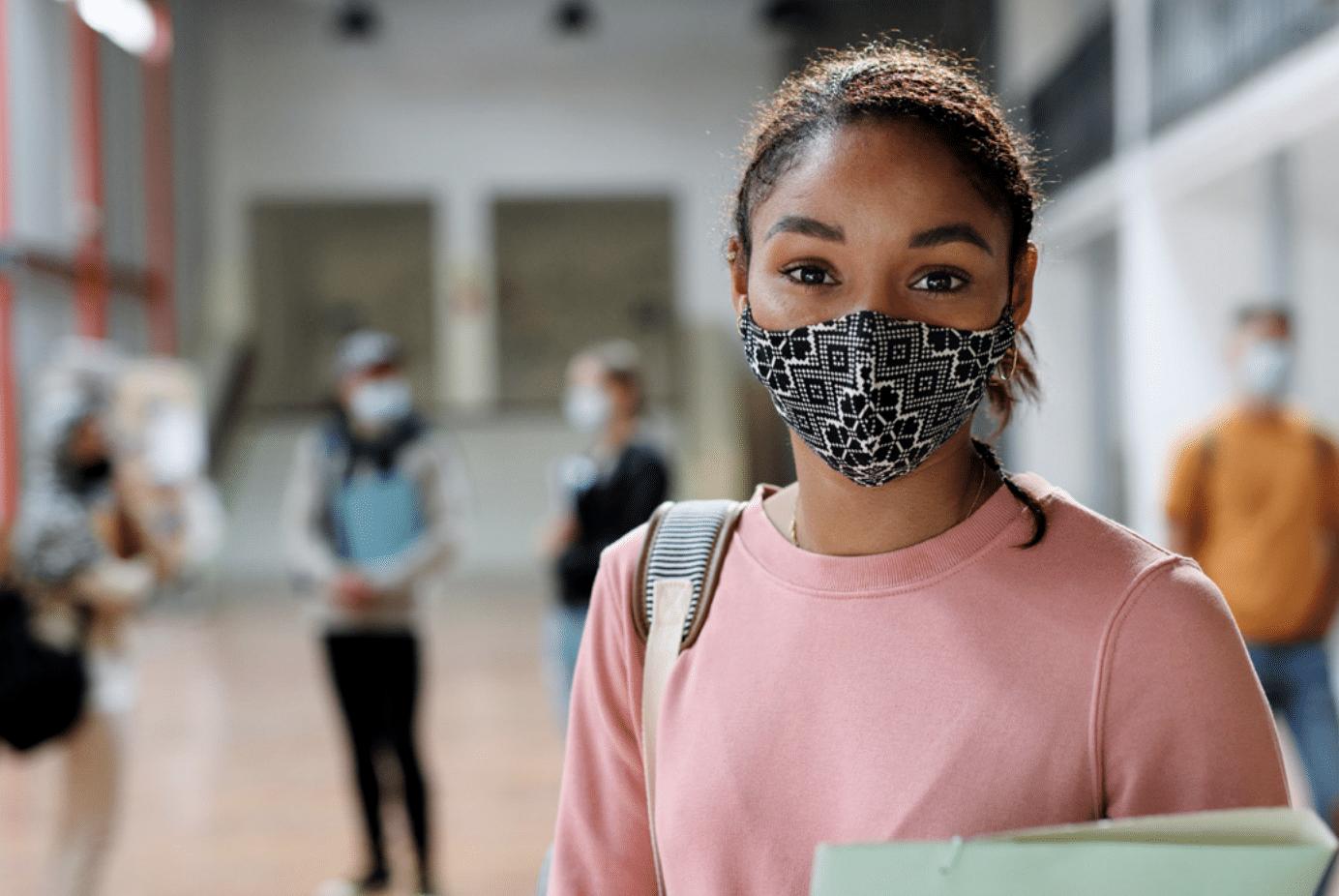Highlights:
- This school year presents significant health and safety challenges
- A unified communications platform helps schools protect students, teachers, and staff
- Schools can prioritize safety by choosing their communication carefully
The 2021-2 academic school year will heavily feature masks, hand sanitizer, and other safety precautions to keep students and teachers safe. And, as with last year, there will be plenty of trepidation on the part of parents and students to go back to school.

This free downloadable resource explains how to talk to children in grades K-6 about the pandemic.
Get guide now
What steps can schools take to protect students and teachers? This article explores the actions schools can take to ensure everyone’s safety and wellbeing.
How schools can prioritize safety
These are the following steps schools can take to make sure everyone is safe:
- Offer hybrid learning models
- Use the right technology for hybrid learning and communication
- Share accurate information when you have it
- Share information internally
- Connect with families
- Offer behavioral and mental health support
- Protect digital information
Offer hybrid learning models
Hybrid learning refers to a situation in which students attend class virtually and in person.
There are a few reasons why hybrid learning models keep students and teachers safe:
- Students who are immunocompromised, or living with an immunocompromised family member, can still maintain educational continuity
- Students who contract any kind of illness (even something as mild as a cold) can learn from home and prevent the spread of sickness
- For parents who are concerned about the inability to maintain distance in classrooms, learning at home is a safe way for kids to stay in school
Use the right technology for hybrid learning and communication
Here’s what administrators must understand about hybrid learning models: they require a reliable, secure platform. That’s why a unified communications platform is an excellent fit.
A unified communications platform is a set of communication tools in a single cloud-based platform, including:
- Telephony
- Video conference
- Chat
- File sharing
- Screen sharing
There’s also contact center functionality; calls can be routed to a dedicated hotline to answer questions.
In addition, a unified communications platform is an excellent choice for communicating updates about changing health guidelines and restrictions. It offers flexible communication channels, so the school can push out updates, and parents and caregivers can view them through the channel of their choice.
Moreover, video conferencing comes in handy when the school wants to hold a town hall to share updates with the community. It allows a large number of participants to attend, so you don’t have to worry about missing anything. You can even record the town hall and post it online later so that those who couldn’t make it can still stay in the information loop.
Share accurate information when you have it
Unfortunately, the coronavirus has led to another pandemic–one of incorrect information. In an interview in February 2021, Professor Vish Viswanath, a professor at Harvard’s school of public health, noted that the pandemic has led to the spread of misinformation (not having the correct facts) and disinformation (false information that’s spread with the intent of deceiving people). While misinformation isn’t shared with the intent to harm, it has the same negative effect as disinformation, which is deliberately damaging.

Schools have the responsibility to share accurate information with students, parents and caregivers, teachers, and staff. Educational communication tools such as a unified communications platform make it easy to share information through text message, telephony, and video conference.
Share information internally
The American Academy of Pediatrics (AAP) recommends strongly monitoring attendance and acting quickly once a negative pattern is noticed.
Let’s say Samantha is in fifth grade, and she doesn’t go to school one day because she has a fever. Samantha has a younger brother in second grade who did go to school. Her teacher notifies the office by texting them through the educational communication tools, and the staff there sends a message to the second-grade teacher, telling her to monitor Samantha’s younger brother.
Through fast action and the right educational tools, the teachers and staff can prevent a potential outbreak at their school.
Connect with families
The AAP also noted in its guidance document from July 2021 that some students (especially those from low-income families or those facing physical or mental health challenges) are at high risk of not returning. Connecting with these families and caregivers of vulnerable students allows students to get the support they need to come back to school.
Educational communication tools offer a number of channels and work on a variety of devices, so it’s easy to keep in touch with families who might only own cell phones.
Offer behavioral and mental health support
In March 2020, the world changed for students in the US. They could no longer attend school in person. Districts scrambled to put distance learning plans into effect.
At home, students of all ages had to cope with parents or caregivers who were under intense pressure. Some people lost their jobs or took pay cuts. It was a stressful, isolating situation for families across the country.
Mental health is just as important as physical health. For some students, the counseling they received through their schools was the only support for their problems. That’s why it’s crucial to continue to offer mental health services virtually. School communication tools enable virtual counseling sessions for students so they can take care of their minds as well as their bodies.
Protect digital information
Part of staying safe during the pandemic also means protecting digital information. During the 2020-1 school year, there were 408 publicly disclosed cybersecurity incidents at K-12 schools throughout the US. Those incidents include:
- Staff and student data breaches
- Ransomware attacks
- Phishing and social engineering
- Denial-of-service attacks
In a number of disturbing cases, hackers infiltrated distance learning classes and disrupted them with repulsive images.
Market-leading educational communication platforms have multiple levels of built-in security to keep digital information safe. Moreover, they’re monitored around the clock, and they offer a 99.999 percent uptime guarantee.
RingCentral’s school communication tools help you share information effectively
RingCentral’s school communication tools offer flexible communication options so you can quickly and easily share accurate information to protect students, teachers, and staff. To learn more, get a demo.
Looking For Startup Consultants ?
Call Pursho @ 0731-6725516
Telegram Group One Must Follow :
For Startups: https://t.me/daily_business_reads







